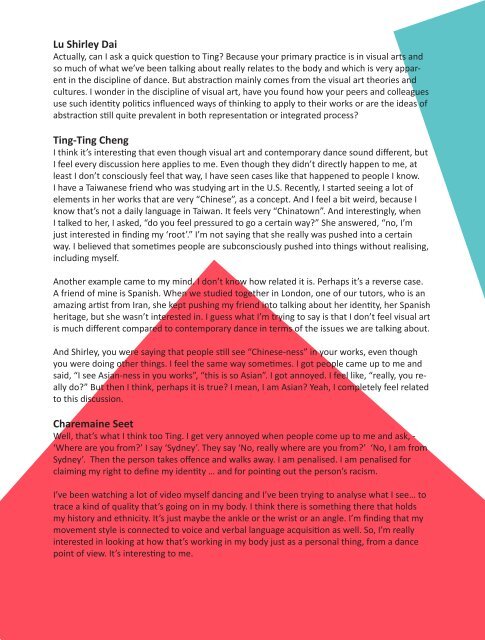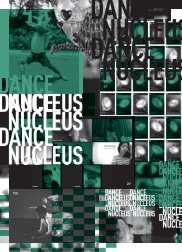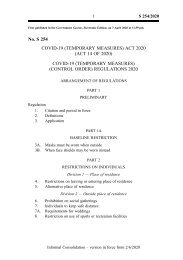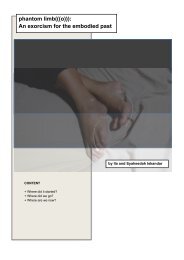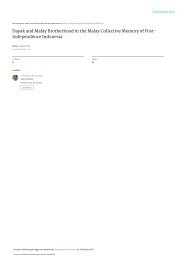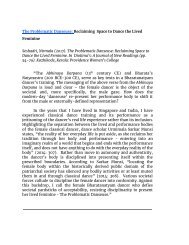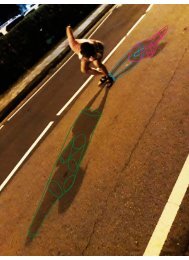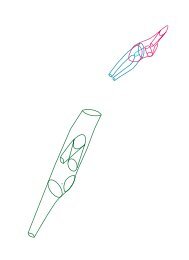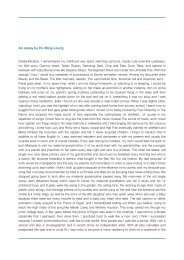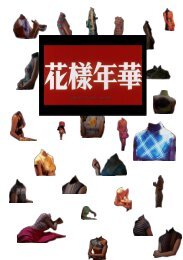Critical Path Digitalmeetup_Transcript
Create successful ePaper yourself
Turn your PDF publications into a flip-book with our unique Google optimized e-Paper software.
Lu Shirley Dai<br />
Actually, can I ask a quick question to Ting? Because your primary practice is in visual arts and<br />
so much of what we’ve been talking about really relates to the body and which is very apparent<br />
in the discipline of dance. But abstraction mainly comes from the visual art theories and<br />
cultures. I wonder in the discipline of visual art, have you found how your peers and colleagues<br />
use such identity politics influenced ways of thinking to apply to their works or are the ideas of<br />
abstraction still quite prevalent in both representation or integrated process?<br />
Ting-Ting Cheng<br />
I think it’s interesting that even though visual art and contemporary dance sound different, but<br />
I feel every discussion here applies to me. Even though they didn’t directly happen to me, at<br />
least I don’t consciously feel that way, I have seen cases like that happened to people I know.<br />
I have a Taiwanese friend who was studying art in the U.S. Recently, I started seeing a lot of<br />
elements in her works that are very “Chinese”, as a concept. And I feel a bit weird, because I<br />
know that’s not a daily language in Taiwan. It feels very “Chinatown”. And interestingly, when<br />
I talked to her, I asked, “do you feel pressured to go a certain way?” She answered, “no, I’m<br />
just interested in finding my ‘root’.” I’m not saying that she really was pushed into a certain<br />
way. I believed that sometimes people are subconsciously pushed into things without realising,<br />
including myself.<br />
Another example came to my mind. I don’t know how related it is. Perhaps it’s a reverse case.<br />
A friend of mine is Spanish. When we studied together in London, one of our tutors, who is an<br />
amazing artist from Iran, she kept pushing my friend into talking about her identity, her Spanish<br />
heritage, but she wasn’t interested in. I guess what I’m trying to say is that I don’t feel visual art<br />
is much different compared to contemporary dance in terms of the issues we are talking about.<br />
And Shirley, you were saying that people still see “Chinese-ness” in your works, even though<br />
you were doing other things. I feel the same way sometimes. I got people came up to me and<br />
said, “I see Asian-ness in you works”, “this is so Asian”. I got annoyed. I feel like, “really, you really<br />
do?” But then I think, perhaps it is true? I mean, I am Asian? Yeah, I completely feel related<br />
to this discussion.<br />
Charemaine Seet<br />
Well, that’s what I think too Ting. I get very annoyed when people come up to me and ask, -<br />
‘Where are you from?’ I say ‘Sydney’. They say ‘No, really where are you from?’ ‘No, I am from<br />
Sydney’. Then the person takes offence and walks away. I am penalised. I am penalised for<br />
claiming my right to define my identity … and for pointing out the person’s racism.<br />
I’ve been watching a lot of video myself dancing and I’ve been trying to analyse what I see… to<br />
trace a kind of quality that’s going on in my body. I think there is something there that holds<br />
my history and ethnicity. It’s just maybe the ankle or the wrist or an angle. I’m finding that my<br />
movement style is connected to voice and verbal language acquisition as well. So, I’m really<br />
interested in looking at how that’s working in my body just as a personal thing, from a dance<br />
point of view. It’s interesting to me.


